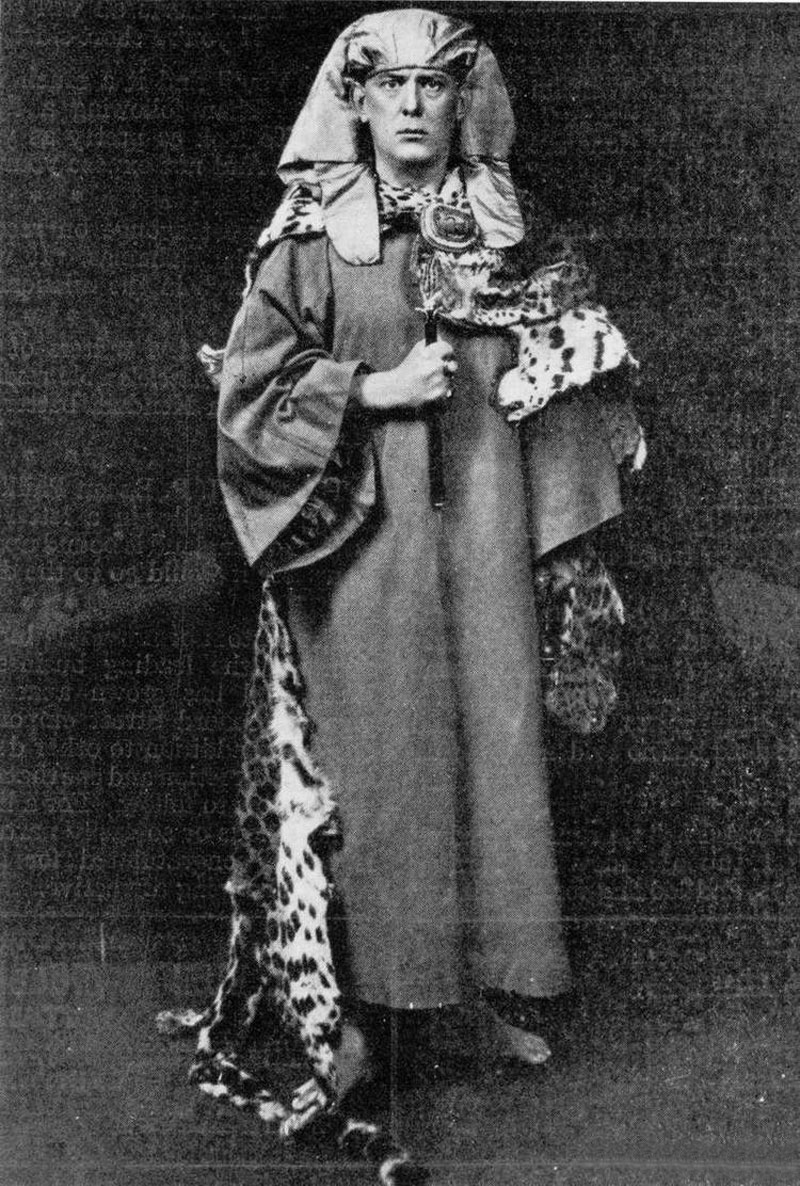|
Great Work (Thelema)
Within Thelema, the Great Work is generally defined as those spiritual practices leading to the accomplishment of the True Will of one's Self in mystical union with the All. Its founder, author and occultist Aleister Crowley, based this path of mystical attainment or enlightenment on his studies in Hermetic alchemy and the Hermetic Qabalah, particularly as they were expounded by Eliphas Levi in the 19th century and later by various members in the Hermetic Order of the Golden Dawn, an occult society of which Crowley had been a member. Crowley wrote that in 1904 he heard and transcribed, from an entity called Aiwass, a book which came to be titled ''The Book of the Law''. Crowley made this book the central sacred text of his new religious movement called Thelema, which he believed heralded a new Aeon for mankind. Between 1907 and 1911, Crowley wrote a series of other small texts which he considered to be inspired, written through him rather than by him, which he afterwards colle ... [...More Info...] [...Related Items...] OR: [Wikipedia] [Google] [Baidu] |
Thelema
Thelema () is a Western esoteric and occult social or spiritual philosophy and new religious movement founded in the early 1900s by Aleister Crowley (1875–1947), an English writer, mystic, occultist, and ceremonial magician. The word ''thelema'' is the English transliteration of the Koine Greek noun (), "will", from the verb (): "to will, wish, want or purpose." Adherents to Thelema are called '' Thelemites'', and phenomena within the scope of Thelema are termed ''Thelemic''. Crowley wrote that, in 1904, he had received a text or scripture called ''The Book of the Law'', dictated to him by a potentially non-corporeal entity named Aiwass. This text was to serve as the foundation of the religious and philosophical system he called Thelema. Crowley identified himself as the prophet of a new era in humanity's spiritual development, a novel age he termed the Æon of Horus. According to Crowley, the facticity of his prophethood was mainly predicated upon his reception of ... [...More Info...] [...Related Items...] OR: [Wikipedia] [Google] [Baidu] |
The Holy Books Of Thelema
''The Holy Books of Thelema'' is a collection of 15 works by Aleister Crowley, the founder of Thelema, originally published in 1909 by Crowley under the title ', and later republished in 1983, together with a number of additional texts, under the new title, ''The Holy Books of Thelema'', by Ordo Templi Orientis under the direction of Hymenaeus Alpha. Content ''The Holy Books of Thelema'' consists of the wholly class A libri of Aleister Crowley, which indicates that they that are not to be changed, even to the letter. According to Crowley, they were not so much written ''by'' him as ''through'' him, and are therefore referred to as inspired works. Additionally, ''Liber LXI'', a class D text, is included as an introduction after a preface by Hymenaeus Alpha and synopsis compiled from Crowley's writings. ''Liber LXI'' was originally class A, then changed to class B, indicating works of scholarship, then changed to class D, indicating official rituals and instructions. ''Liber ... [...More Info...] [...Related Items...] OR: [Wikipedia] [Google] [Baidu] |
Rāja Yoga
In Sanskrit texts, ''Rāja yoga'' (; राजयोग) was both the goal of yoga and a method to attain it. The term also became a modern name for the practice of yoga in the 19th-century when Swami Vivekananda gave his interpretation of the Yoga Sutras of Patanjali in his book ''Raja Yoga''.Swami Vivekananda, ''Raja Yoga'', Since then, Rāja yoga has variously been called aṣṭāṅga yoga, royal yoga, royal union, sahaja marg, and classical yoga. Etymology and usage Rāja (Sanskrit: राज) means "chief, best of its kind" or "king". Rāja yoga thus refers to "chief, best of yoga". The historical use of the term ''Rāja yoga'' is found in other contexts, quite different from its modern usage. In ancient and medieval Sanskrit texts, it meant the highest state of yoga practice (one reaching ''samadhi''). The '' Hatha Yoga Pradipika'', for example, states that Hatha yoga is one of the ways to achieve Rāja yoga. Rāja yoga is discussed in the ''Yogatattva Upanishad'' ... [...More Info...] [...Related Items...] OR: [Wikipedia] [Google] [Baidu] |
Thoth Tarot
The Thoth Tarot is an esoteric tarot deck painted by Lady Frieda Harris according to instructions from Aleister Crowley. Crowley referred to this deck as The Book of Thoth, and also wrote a 1944 book of that title intended for use with the deck. Background Crowley originally intended the Thoth deck to be a six-month project aimed at updating the traditional pictorial symbolism of the tarot. However, due to increased scope, the project eventually spanned five years, between 1938 and 1943. Symbolism The illustrations of the deck feature symbolism based upon Crowley's incorporation of imagery from many disparate disciplines, including science and philosophy and various occult systems (as described in detail in his ''The Book of Thoth''). Differences from Rider–Waite tarot Order and names of trumps Crowley renamed several of the trumps compared to earlier arrangements, and also re-arranged the numerical, astrological and Hebrew alphabet correspondences of 4 trumps compared to t ... [...More Info...] [...Related Items...] OR: [Wikipedia] [Google] [Baidu] |
English Qaballa
English Qaballa (EQ) is an English Qabalah, supported by a system of arithmancy that interprets the letters of the English alphabet via an assigned set of values, discovered by James Lees in 1976. It is the result of an intent to understand, interpret, and elaborate on the mysteries of Aleister Crowley's received text, '' Liber AL vel Legis, the Book of the Law''. According to Jake Stratton-Kent, "the English Qaballa is a qabalah and not a system of numerology. A qabalah is specifically related to three factors: one, a language; two, a 'holy' text or texts; three, mathematical laws at work in these two." This system has also been referred to as the ALW cipher, New Aeon English Qabalah or NAEQ by third parties (see Other names section). Background The first appearance of a system of gematria using the natural order of the English alphabet was developed in 1532 by Michael Stifel, who also proposed a system called the ''trigonal alphabet'', using successive triangular numbers. Anot ... [...More Info...] [...Related Items...] OR: [Wikipedia] [Google] [Baidu] |
Buddhist Meditation
Buddhist meditation is the practice of meditation in Buddhism. The closest words for meditation in the classical languages of Buddhism are '' bhāvanā'' ("mental development") and '' jhāna/dhyāna'' (mental training resulting in a calm and luminous mind). Buddhists pursue meditation as part of the path toward liberation from defilements ('' kleshas'') and clinging and craving (''upādāna''), also called awakening, which results in the attainment of Nirvana, and includes a variety of meditation techniques, most notably '' anapanasati'' (mindfulness of breathing). Other techniques include '' asubha bhavana'' ("reflections on repulsiveness");Deleanu, Florin (1992)Mindfulness of Breathing in the Dhyāna Sūtras Transactions of the International Conference of Orientalists in Japan (TICOJ) 37, 42-57. reflection on '' pratityasamutpada'' (dependent origination); ''anussati'' (recollections, including ''anapanasati'') and ''sati'' (mindfulness), culminating in ''dhyana'' (develop ... [...More Info...] [...Related Items...] OR: [Wikipedia] [Google] [Baidu] |
Eucharist
The Eucharist (; from Greek , , ), also known as Holy Communion and the Lord's Supper, is a Christian rite that is considered a sacrament in most churches, and as an ordinance in others. According to the New Testament, the rite was instituted by Jesus Christ during the Last Supper; giving his disciples bread and wine during a Passover meal, he commanded them to "do this in memory of me" while referring to the bread as "my body" and the cup of wine as "the blood of my covenant, which is poured out for many". The elements of the Eucharist, sacramental bread ( leavened or unleavened) and wine (or non-alcoholic grape juice), are consecrated on an altar or a communion table and consumed thereafter, usually on Sundays. Communicants, those who consume the elements, may speak of "receiving the Eucharist" as well as "celebrating the Eucharist". Christians generally recognize a special presence of Christ in this rite, though they differ about exactly how, where, and when Chr ... [...More Info...] [...Related Items...] OR: [Wikipedia] [Google] [Baidu] |
Invocation
An invocation (from the Latin verb ''invocare'' "to call on, invoke, to give") may take the form of: *Supplication, prayer or spell. *A form of possession. *Command or conjuration. *Self-identification with certain spirits. These forms are described below, but are not mutually exclusive. See also Theurgy. Supplication or prayer As a supplication or prayer, an invocation implies calling upon God, a god, goddess, or person. When a person calls upon God, a god, or goddess to ask for something (protection, a favour, or his/her spiritual presence in a ceremony) or simply for worship, this can be done in a pre-established form or with the invoker's own words or actions. An example of a pre-established text for an invocation is the Lord's Prayer. All religions in general use invoking prayers, liturgies, or hymns; see for example the mantras in Hinduism and Buddhism, the Egyptian ''Coming Out by Day'' (aka ''Book of the Dead''), the Orphic Hymns and the many texts, still prese ... [...More Info...] [...Related Items...] OR: [Wikipedia] [Google] [Baidu] |
Ceremonial Magic
Ceremonial magic (ritual magic, high magic or learned magic) encompasses a wide variety of rituals of magic. The works included are characterized by ceremony and numerous requisite accessories to aid the practitioner. It can be seen as an extension of ritual magic, and in most cases synonymous with it. Popularized by the Hermetic Order of the Golden Dawn, it draws on such schools of philosophical and occult thought as Hermetic Qabalah, Enochian magic, Thelema, and the magic of various grimoires. Ceremonial magic is part of Hermeticism and Western esotericism. The synonym magick is a archaic spelling of 'magic' used during the Renaissance, which was revived by Aleister Crowley to show and differentiate the occult from performance magic. He defined it as "the Science and Art of causing Change to occur in conformity with Will", including "mundane" acts of will as well as ritual magic. Crowley wrote that "it is theoretically possible to cause in any object any change of which ... [...More Info...] [...Related Items...] OR: [Wikipedia] [Google] [Baidu] |







